



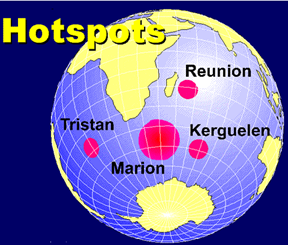

Disclaimer: Copyright infringement not intended.
Context
Ninety East Ridge
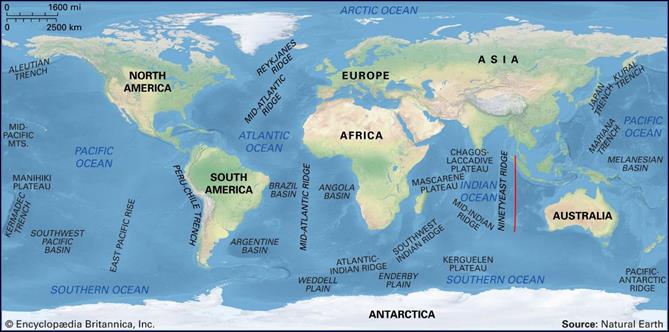
|
Aseismic ridge Aseismic ridge is a long, linear and mountainous structure that crosses the basin floor of some oceans. Earthquakes do not occur within aseismic ridges, and it is this feature that distinguishes them from oceanic spreading centres. Aseismic ridges are formed by a hotspot in the mantel under the Earth's crust. As a tectonic plate moves over the hotspot, a series of seamounts can form on the ocean floor over a period of millions of years. This may be in the form of mountains, guyots or undersea plateaus. |
Kerguelen hotspot
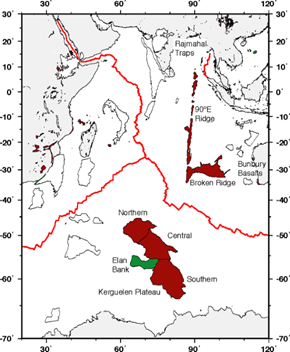
|
Volcanic Hotspots In geology, hotspots are volcanic locales fed by underlying mantle that is anomalously hot compared with the surrounding mantle. Examples include the Hawaii, Iceland, and Yellowstone hotspots. |
Findings of the new Study
Plausible reason
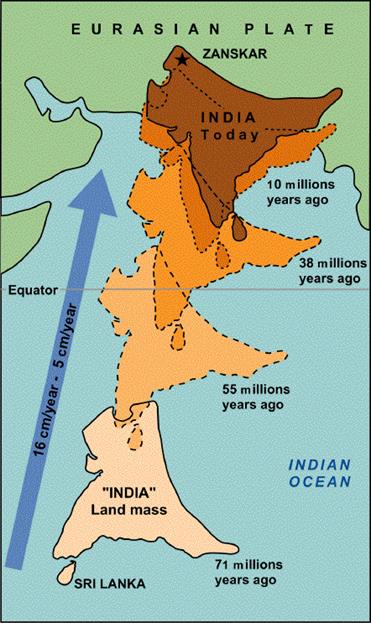
|
MANTLE PLUME A mantle plume is an area under the rocky outer layer of Earth, called the crust, where magma is hotter than surrounding magma. Heat from this extra hot magma causes melting and thinning of the rocky crust, which leads to widespread volcanic activity on Earth's surface above the plume. Hot spot volcanoes occur far from plate boundaries. Because the hot spot is caused by mantle plumes that exist below the tectonic plates, as the plates move, the hot spot does not, and may create a chain of volcanoes on the Earth's surface. |
The Indian continental plate was a part of Gondwanaland. It broke away from Antarctica, Australia and Africa during the supercontinental break-up. Since then, the Indian lithosphere has experienced several mantle plume eruptions underneath it.
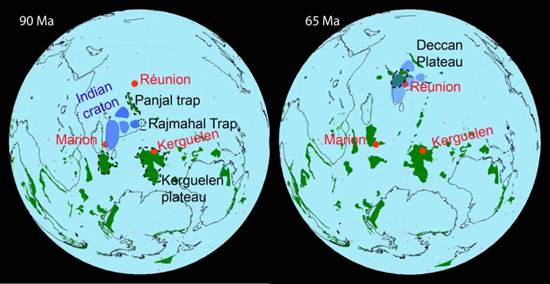
|
NCPOR The National Centre for Polar and Ocean Research, (NCPOR) formerly known as the National Centre for Antarctic and Ocean Research (NCAOR) is an Indian research and development institution, situated in Vasco da Gama, Goa. It is an autonomous Institution of the Department of Ocean Development (DOD), Ministry of Earth Sciences, which is responsible for administering the Indian Antarctic Programme and maintains the Indian government's Antarctic research stations, Bharati and Maitri. NCPOR was established as NCAOR in 1998. |
https://www.downtoearth.org.in/news/environment/study-gains-new-insights-into-a-fundamental-question-in-geology-83666






© 2025 iasgyan. All right reserved